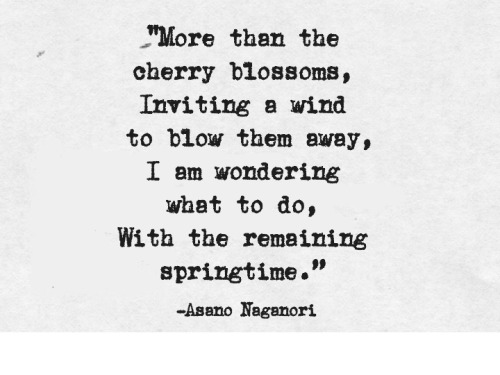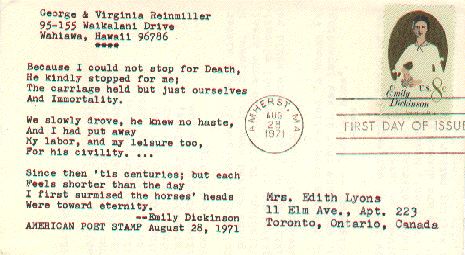I wrote two already.
Morbid? Hardly.
It's more like staring at death in the face and still keeping your creativity working for you. =D
The Japanese have a standing tradition of writing death poems. They call these kind of poems as Jisei. Japanese Zen monks were the first to write these kind of poems. The idea is to put your thoughts on death while at the death bed. In that way, the written death poem becomes a meaningful declaration on death.
 |
| I should buy myself a copy of this book. This gives us insights on death in the most poetic manner. |
History archives have many of these death poems. Traditionally, these poems were written in such a way that it was devoid of emotions or if there were hints of emotions - they were typically minimized. The stories behind each death poem however were varied and colorful.
Sometimes, the poet describes his surroundings at the time of his death. Like:
What is more interesting about this poem was the story behind it.
Asano Naganori happened to be a daimyo from the 16th century. Daimyos are Japanese feudal lords who owned large track of lands. They are ruled by a shogun. Back in his time, Asano Naganori was the daimyo of the Ako domain. History has it that he was not in good terms with Kira Yoshinaka, a high-ranking official of the Tokugawa Shogunate. Tensions increased between the two of them leading to the attempted slay of Kira by Asano. Shogun Tsunayoshi ordered Asano to commit seppuku (suicide) for this act. Before committing seppuku, Asano Naganori wrote this death poem. The 47 ronins ruled by Asano avenged their master's death by killing Kira. These part of history is immortalized not only in a death poem but also in many kabuki, which featured this event in the Japanese history.
Shinsui's death meanwhile gave birth to an important symbol used by Zen Buddhists. It was said that Shinsui, who died in 1769, was requested by his disciples to write his death poem. Shinsui grasped the paintbrush, drew a circle, cast the paintbrush aside and died.
Shinsui's death poem which is the circle drawn above became one of Zen Buddhism's important symbols. The circle depicts the void which followers of Zen Buddhism aim for.
I found some interesting Jiseis here.
The Koreans and the Chinese also had a tradition of writing death poems.
On the other hand, most of the death poems written by the Westerners were not really written on their death beds. Some of the now famous death poems were ordinary musings by poets on death.
Emily Dickinson, one of my favorite poets, wrote one such death poem.
Thanatopsis is another famous death poem. It was written by William Cullen Bryant. The title was derived from two Greek words: Thanatos which means Death and Opsis which means Sight. Together thanatopsis is often translated as Meditation Upon Death. Like Emily Dickinson's death poem, the tone of the poem was solemn.
As time went by, some contemporary death poems were written in a funny manner. Geoff Page's poem Last Rite is one example.
A compilation of short poems which pokes fun at death can be found here.
Now if you ask me, would I have been able to write a good poem if it was me on that death bed? I wouldn't know and I do not want to know just yet or anytime in the near future. But you have to admire those who were able to write death poems at their death bed and those who can poke fun at death.
What lesson do we take from all of these?
Death does not require one common response from all of us. Mourning is not a requirement. In fact, we can be as creative as we want to in matters of death. And tradition may dictate upon us to treat death solemnly but we can also find comic relief from death. In the end, some people find satisfaction and peace from knowing that death can only take away their existence on earth but not their soul and certainly not their humor and creativity.
So how do you prefer to stare at death?
References:




No comments:
Post a Comment